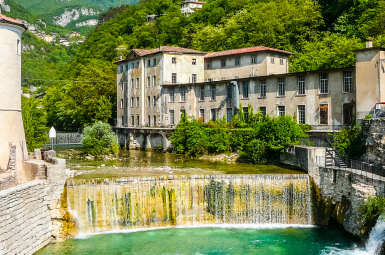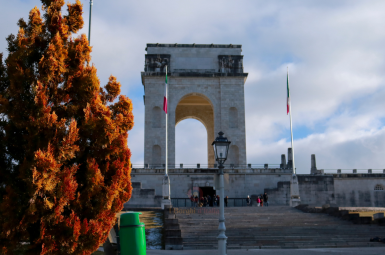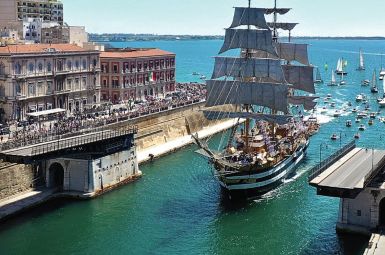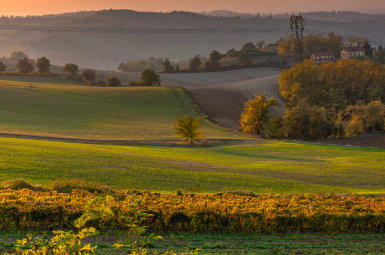
Morano Calabro
Il Borgo di Morano Calabro
Morano Calabro: Il Presepe di Pietra che Bacia il Pollino
Morano Calabro non si visita, si ammira. Questo borgo, premiato con la Bandiera Arancione del Touring Club Italiano e inserito tra “I Borghi più Belli d’Italia”, offre uno degli scorci più iconici e suggestivi dell’intera Calabria: una cascata di case di pietra che si inerpica sulla collina, culminando con i ruderi del suo Castello, con l’imponente massiccio del Pollino a fare da sfondo maestoso.La Visione Panoramica: Un Capolavoro a Gradoni
L’identità di Morano è indissolubilmente legata alla sua architettura a grappolo, che le è valsa l’appellativo di “presepe in pietra”:- L’Ascesa Verticale: Il centro storico è un dedalo intricato di vicoli, archi, sottopassi e scalinate, dove le case in architettura povera sembrano abbracciarsi l’una all’altra in un assetto difensivo ereditato dal Medioevo. Salendo, si scoprono scorci panoramici mozzafiato sulla Valle del fiume Coscile (l’antica Sybaris).
- Il Castello Normanno-Svevo: Sulla sommità del colle troneggiano i ruderi del Castello, di origine normanna, ampliato nel Rinascimento dai Sanseverino di Bisignano per trasformarlo in una lussuosa residenza. Oggi, le sue rovine offrono il punto di osservazione ideale per cogliere la magia del borgo e la potenza delle vette del Pollino, come il Dolcedorme.
Un Tesoro di Fede e Arte
Nonostante le sue dimensioni, Morano Calabro custodisce un patrimonio artistico e religioso di altissimo livello, sintomo del suo splendore medievale e rinascimentale.- Chiesa di San Bernardino da Siena: Un gioiello di architettura tardo-gotica e monastica quattrocentesca. Al suo interno, si può ammirare uno splendido soffitto ligneo a carena di nave, un’unicità in Calabria, e il celebre Polittico di Bartolomeo Vivarini, datato 1477, che illumina l’altare.
- Collegiata dei Santi Pietro e Paolo: Una delle chiese più antiche, risalente all’Anno Mille, che oggi sfoggia un elegante aspetto tardo-barocco/rococò. Qui sono custodite importanti opere scultoree, tra cui il magnifico quartetto marmoreo di Pietro Bernini (padre del più noto Gian Lorenzo), che testimonia la sua attiva presenza tra fine ‘500 e inizio ‘600.
Il Profumo del Pollino e la Storia Magno-Greca
Morano non è solo storia e architettura, ma è anche il punto d’accesso privilegiato al Parco Nazionale del Pollino.- Crocevia Naturale e Culturale: La sua posizione strategica, un tempo avamposto romano (Muranum era citata sulla lapide miliare rinvenuta a Polla), la rende oggi il luogo ideale per immergersi nella natura selvaggia, tra sentieri di trekking e panorami maestosi.
- Radici Profonde: L’area vanta legami storici con l’età magno-greca, testimoniando come questo colle sia stato un crocevia culturale e commerciale fin dall’antichità.
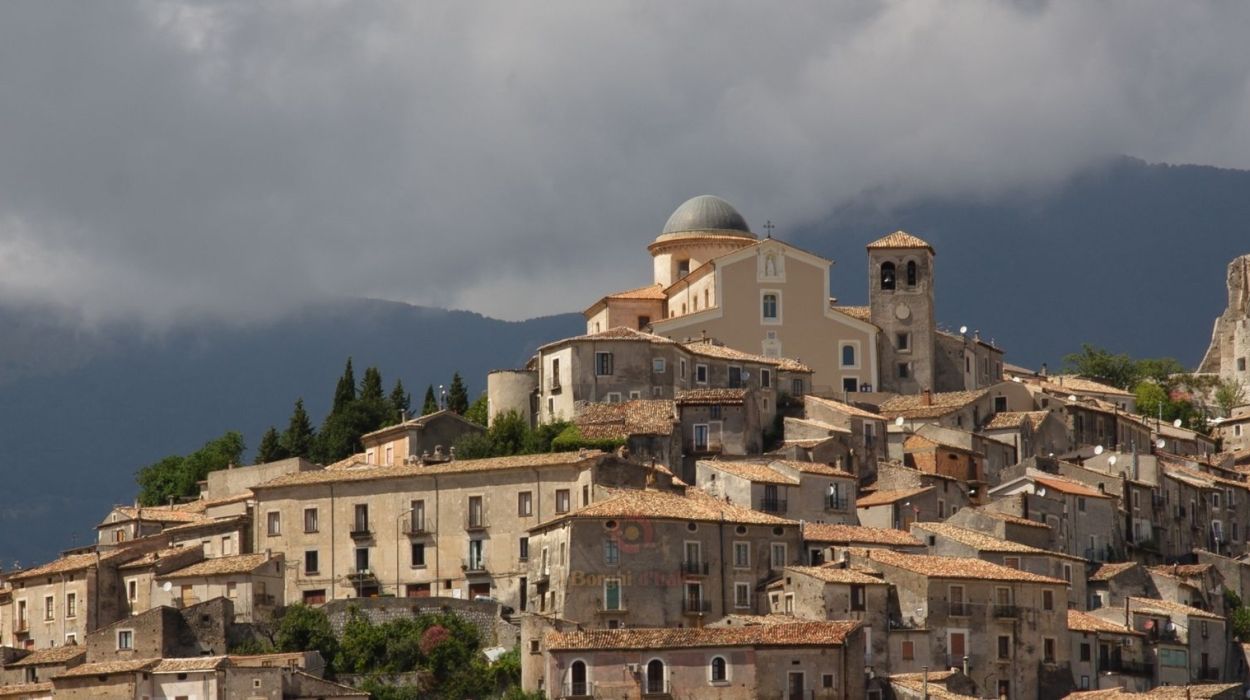
Il Borgo d’Italia
tutto da scoprire ed esplorare
Monumenti
Morano Calabro Monumentale: L’Arte Scalpita sulla Roccia
Morano Calabro, gioiello incastonato alle pendici del Massiccio del Pollino, è un inebriante concentrato di storia e arte. I suoi monumenti non sono solo pietre, ma i capitoli viventi di una storia millenaria che affonda le radici nel mondo romano e fiorisce nel Medioevo e nel Rinascimento. La loro bellezza è amplificata dallo scenario naturale, creando un’esperienza visiva indimenticabile.
1. Il Castello Normanno-Svevo: Sentinella Senza Tempo
Dominando l’intera “cascata” di case e l’ampia valle sottostante, il Castello Feudale è il punto focale del paesaggio di Morano.
- Le Origini e la Magnificenza: Eretto su un preesistente avamposto romano-bizantino, il castello assunse la sua forma imponente in epoca Normanna e fu ampliato tra il Cinquecento dai principi Sanseverino di Bisignano. Loro ambivano a trasformarlo in una sontuosa residenza rinascimentale, chiamando architetti napoletani per il progetto.
- Ruderi Maestosi: Nonostante i bombardamenti francesi del 1806 e i successivi saccheggi, i ruderi conservano una forza espressiva straordinaria. Le sue mura e le sue torri diroccate offrono uno dei punti panoramici più spettacolari sulla singolare conformazione urbanistica del borgo.
2. La Collegiata dei Santi Apostoli Pietro e Paolo: Il Trionfo Barocco
Situata nella parte alta del paese, nei pressi del Castello, è la chiesa più antica di Morano.
- Storia Stratificata: Fondata probabilmente intorno all’Anno Mille, deve il suo aspetto attuale ai rifacimenti tardo-barocchi e rococò del XVIII secolo, che le conferiscono un’elegante e sfarzosa decorazione interna a tre navate.
- Il Tesoro Scultoreo: Il vero vanto è la presenza di opere scultoree di altissimo pregio. La chiesa custodisce il magnifico quartetto marmoreo di Pietro Bernini (padre del celebre Gian Lorenzo), tra cui le statue dei Santi Pietro e Paolo e di Santa Caterina d’Alessandria e Santa Lucia. La presenza di un tale maestro del Cinquecento testimonia l’importanza raggiunta da Morano.
3. La Chiesa di San Bernardino da Siena: L’Eccezione Gotica
Uno dei gioielli architettonici più preziosi di Morano, un magnifico esempio di architettura monastica.
- Gotico Sobrio: Fondato nel 1452 per volere del principe Antonio Sanseverino, questo complesso monastico colpisce per la purezza delle sue linee tardo-gotiche, con un bel portale ogivale in pietra gialla.
- Un Interno Sorprendente: L’interno, solenne, custodisce due veri e propri tesori: lo straordinario soffitto ligneo a “carena di nave”, rarissimo in Calabria, e il pregevole Polittico di Bartolomeo Vivarini (1477), un capolavoro della scuola veneta che aggiunge un inatteso tocco rinascimentale al cuore del borgo.
4. La Collegiata di Santa Maria Maddalena: Fasto e Opere d’Arte
Questa collegiata, ricostruita a partire dal XVI secolo, si distingue per la sua fastosa facciata e la ricchezza delle opere d’arte che racchiude.
- Eleganza Architettonica: Si presenta con una facciata riccamente decorata, punto di riferimento visivo nella parte intermedia del borgo.
- Patrimonio Interno: Al suo interno sono conservate preziose tele e sculture lignee, tra cui spiccano i dipinti di pittori locali e il contributo di artisti come il Moranese Francesco Schifino, confermando la tradizione artistica della città.
La passeggiata tra i monumenti di Morano Calabro non è solo un tour storico, ma un’ascesa attraverso i secoli, dove ogni pietra e ogni opera d’arte racconta la determinazione e la grandeur di un popolo indissolubilmente legato alla sua montagna.
Curiosità
Morano Calabro: 5 Curiosità che Rendono Unico il “Presepe in Pietra”
Morano Calabro non è solo uno dei borghi più belli d’Italia: è una meraviglia architettonica e storica che sorprende a ogni vicolo. Incorniciato dal maestoso Massiccio del Pollino, questo paese sfoggia un fascino raro, risultato di secoli di storia e leggende.
Ecco le curiosità che svelano l’anima di questo gioiello calabrese.
1. La Forma a “Grappolo” e il Miracolo Visivo
L’aspetto più iconico di Morano è la sua incredibile conformazione urbana, che non è casuale ma strategica.
- Il Presepe (Quasi) Verticale: Il borgo si arrampica in modo vertiginoso sulla collina, con le case disposte a cascata l’una sull’altra. Questa struttura a grappolo, che dal basso sembra un immenso presepe di pietra, non è solo estetica: fu concepita per motivi difensivi in epoca medievale, per resistere meglio agli assedi e alle scorribande.
- La Montagna alle Spalle: La scenografia naturale è completata dalla vicinanza fisica al Monte Pollino, che spesso appare innevato, creando un contrasto visivo spettacolare tra la pietra grigia delle case e il bianco delle vette.
2. Un Nome che Celebra l’Antica Via Romana
Il nome stesso di Morano è un richiamo diretto alla sua fondamentale posizione strategica.
- Dal Romano al Calabro: L’antico toponimo romano era “Muranum”, un riferimento al fatto che il paese sorgeva lungo il tracciato della via consolare romana Popilia-Annia, che collegava la costa tirrenica a quella ionica.
- La Precisione del 1863: L’aggiunta dell’appellativo “Calabro” è un fatto relativamente recente, avvenuto nel 1863 dopo l’Unità d’Italia, per distinguerlo dall’omonima Morano sul Po in Piemonte.
3. L’Eredità Artistica del Bernini (Padre)
Morano Calabro vanta l’onore di custodire opere di una delle famiglie più importanti della storia dell’arte italiana.
- Pietro, non Gian Lorenzo: Le magnifiche statue marmoree dei Santi Pietro e Paolo, conservate nella Collegiata dei Santi Apostoli Pietro e Paolo, sono opera di Pietro Bernini (1562-1629), il talentuoso padre del ben più celebre Gian Lorenzo Bernini, massimo esponente del Barocco romano.
- Il Legame con Napoli: Queste sculture, insieme ad altre presenti in paese, testimoniano l’influenza culturale della Scuola Napoletana (dove Pietro Bernini fu attivo) e l’importanza di Morano come centro di mecenatismo nel periodo tardo-cinquecentesco e seicentesco.
4. Il Soffitto Ligneo Unico
Tra i tesori architettonici, spicca un elemento di rara fattura che pochi visitatori notano immediatamente.
- La “Carena di Nave”: All’interno della Chiesa di San Bernardino da Siena (un capolavoro del Gotico quattrocentesco), si può ammirare uno splendido soffitto ligneo a carena di nave. Questo tipo di soffitto, tipico dell’architettura veneziana e dell’Italia settentrionale, è estremamente raro da trovare in Calabria, rendendolo un vero e proprio vanto artistico e ingegneristico per il borgo.
5. La Rievocazione Storica dell’Impresa Anti-Saracena
La storia militare di Morano è celebrata ogni anno con un evento che onora un’antica vittoria.
- La Festa della Bandiera: A maggio, il paese rivive la sua storia con la Festa della Bandiera, una rievocazione che celebra la leggendaria vittoria dei Moranesi contro un’orda di Saraceni intorno all’anno Mille. La tradizione vuole che i moranesi sconfissero l’invasore, portando in trionfo la testa del loro condottiero. L’evento è un tripudio di cortei storici, giocolieri e danze, che mantiene viva la memoria di un popolo indomito.
Morano Calabro è, quindi, un luogo dove la bellezza paesaggistica si fonde con la profondità storica, offrendo un’esperienza che va oltre la semplice visita.
Personaggi
Morano Calabro: L’Elite Intellettuale e Politica del Pollino
Morano Calabro, con la sua storia stratificata tra feudalesimo e Rinascimento, non ha soltanto un patrimonio architettonico da “presepe”, ma anche un solido retaggio di figure che hanno influenzato la politica e il pensiero calabrese. Sebbene il borgo sia stato plasmato dalle grandi famiglie feudali come i Sanseverino, ha anche dato i natali a personalità che hanno lottato per il progresso e la giustizia sociale.
1. Il Pioniere del Socialismo Calabrese: Nicola De Cardona
Una delle figure politiche più significative nate a Morano, e tra i più importanti della storia contemporanea calabrese.
- La Nascita del Socialismo Locale: Nato in una famiglia di possidenti, Nicola De Cardona (1869-1958) fu un intellettuale e politico che abbracciò con fervore gli ideali socialisti. Già nel 1895 fondò a Morano uno dei primi circoli socialisti di tutta la Calabria, in un’epoca in cui la regione era dominata dalle logiche agrarie e conservatrici.
- Impegno e Contrasti: La sua attività politica, mirata a emancipare le classi più povere, fu intensa e gli costò processi e procedimenti giudiziari, dimostrando il suo coraggio nel rompere gli schemi del tempo. De Cardona rimane il decano dei socialisti calabresi e un simbolo della lotta per i diritti civili nel Mezzogiorno.
- Un Legame Familiare Storico: Era fratello di Carlo De Cardona, sacerdote e influente leader del movimento cattolico calabrese, a testimonianza della complessa ma fondamentale influenza di questa famiglia sulla vita politica della regione.
2. Il Pittore e la Tradizione Locale: Francesco Schifino
Morano ha onorato anche le arti, ospitando e dando i natali a maestri che hanno lasciato traccia nelle chiese del borgo.
- Pittore d’Arte Sacra: Francesco Schifino (XVII secolo) è un nome noto nell’arte sacra locale. Pittore attivo anche fuori dalla Calabria (alcune fonti lo indicano come attivo per un periodo anche a Firenze), ha lasciato importanti opere nelle chiese di Morano.
- L’Eredità Visiva: A lui è attribuita una “Circoncisione” conservata nella Chiesa di Santa Maria Maddalena. Artisti come Schifino rappresentano quel filone di eccellenza artistica che, pur non raggiungendo fama nazionale, è cruciale per la ricchezza culturale e visiva del borgo.
3. L’Eredità del Feudalesimo: I Personaggi che Hanno Forgiato il Borgo
Non sono nativi, ma è impossibile parlare della grandezza di Morano senza citare le figure che l’hanno letteralmente costruita e arricchita d’arte, elevandola a Città d’Arte.
- Pietro Bernini (1562-1629): Il padre del celebre Gian Lorenzo Bernini, pur essendo di origine toscana e attivo a Napoli, lasciò a Morano un’eredità scultorea preziosissima. Le sue statue marmoree, tra cui quelle dei Santi Pietro e Paolo, sono custodite nell’omonima Collegiata e rappresentano un unicum di arte toscana-napoletana in questa parte della Calabria.
- Antonio Sanseverino (XV Secolo): Principe e feudatario, fu il promotore della fondazione del Monastero di San Bernardino da Siena, impreziosito dal magnifico soffitto ligneo. La sua visione trasformò Morano, assicurandole uno status di centro culturale di prim’ordine nel Rinascimento.
Questi personaggi, siano essi figli della terra o mecenati illuminati, hanno contribuito a rendere Morano Calabro non solo un capolavoro visivo, ma anche un crocevia storico e culturale di fondamentale importanza.
Ricette Tipiche
Morano Calabro: La Cucina del Borgo a Gradoni, Tra Terra e Montagna
La gastronomia di Morano Calabro è un inno alla genuinità del Parco Nazionale del Pollino. Qui, la cucina non è solo nutrimento, ma un racconto storico, dove i sapori decisi dell’entroterra si fondono con la saggezza contadina e la ricchezza dei prodotti silvani. Preparati a scoprire piatti che scaldano l’anima e rendono omaggio alla montagna.
I Primi Piatti: L’Arte della Pasta Antica
A Morano, la pasta fresca è sacra. È l’espressione massima della povertà che si fa ricchezza nel gusto, condita con i frutti della pastorizia.
1. Lagane e Fasuli (Lagane e Fagioli)
Il comfort food per eccellenza, un piatto povero ma completo che celebra gli ingredienti base della terra.
- Le Lagane: Simili a tagliatelle rustiche, spesse e senza uova, le lagane sono fatte semplicemente con farina di grano duro e acqua. Vengono lavorate a mano per ottenere la consistenza perfetta.
- Il Condimento: Vengono immerse in un brodo denso e saporito di fagioli bianchi (o borlotti), arricchito da aglio, alloro e, immancabile, un’abbondante spolverata di peperoncino in polvere o, per chi ama i sapori più complessi, un tocco di salame o cotiche di maiale per intensificare il gusto. È un piatto che sa di casa e di antiche tradizioni.
2. Rascatelli con Ragù di Capra o Maiale
Il formato di pasta tipico della domenica e delle feste, perfetto per accogliere i sughi robusti.
- I Rascatelli: Simili ai cavatelli, sono piccoli gnocchetti di pasta fresca ottenuti raschiando un pezzetto di impasto con tre dita su una superficie ruvida (spesso un tavolo di legno), creando la forma ideale per “catturare” il sugo.
- Il Ragù Silvano: Il condimento prediletto è il ragù di capra o, in alternativa, di maiale (salsiccia o spalla). La carne viene cotta lentamente per ore con pomodoro, vino e aromi del Pollino, come origano selvatico e alloro. Il piatto viene infine generosamente cosparso di pecorino stagionato locale.
Secondi e Contorni: Il Cuore della Montagna
La carne e le verdure selvatiche dominano i secondi, riflettendo la vicinanza del borgo alle pendici del massiccio del Pollino.
3. Agnello del Pollino al Forno con Patate
L’agnello, allevato nei pascoli d’altura, ha una carne tenera e dal sapore inconfondibile.
- La Preparazione: La carne di agnello, tagliata a pezzi, viene marinata e poi cotta lentamente in forno. Gli aromi sono quelli semplici ma efficaci della montagna: rosmarino, aglio, alloro e, soprattutto, tanto olio extra vergine d’oliva locale.
- Contorno Essenziale: È sempre accompagnato dalle patate della Sila o dei vicini altopiani, tagliate spesse e cotte insieme all’agnello, assorbendone tutti i succhi e i profumi.
4. Frittata di Erbe Spontanee (Frittata cu l’ervuzzi)
La testimonianza della sapienza erboristica e contadina, che trasforma le erbe selvatiche in una prelibatezza.
- Raccolta Selettiva: La frittata cu l’ervuzzi è preparata con le erbe spontanee commestibili raccolte nei campi e nei boschi del Pollino, come cicoria selvatica, finocchietto selvatico e borragine.
- La Ricetta: Le erbe vengono sbollentate, saltate in padella con aglio e peperoncino, e poi unite a uova fresche. Un piatto semplice, ma dalla texture e dal sapore intensi, che racchiude l’essenza della flora moranese.
La Dolcezza del Borgo: Tradizione e Festività
I dolci di Morano seguono il calendario delle festività, con preparazioni che utilizzano spesso miele e mandorle.
5. I Bocconotti Moranesi
Il dolce più rappresentativo della zona, una piccola pasticceria che esprime l’eleganza del borgo.
- Il Contenitore: Sono piccoli gusci di pasta frolla friabile, dalla caratteristica forma a “boccone”.
- Il Ripieno: La ricetta classica moranese prevede un ripieno goloso a base di mostarda d’uva (ottenuta dal mosto cotto, o vincotto), mandorle tritate e cioccolato fondente o cacao. Vengono spolverati con zucchero a velo e sono perfetti per accompagnare il caffè o il digestivo.
La cucina di Morano Calabro è un viaggio sensoriale che ti farà assaporare la storia in ogni boccone. Hai già scelto quale di queste specialità proverai per prima?
